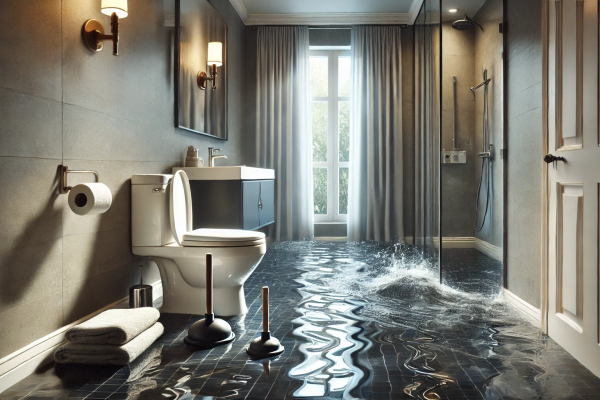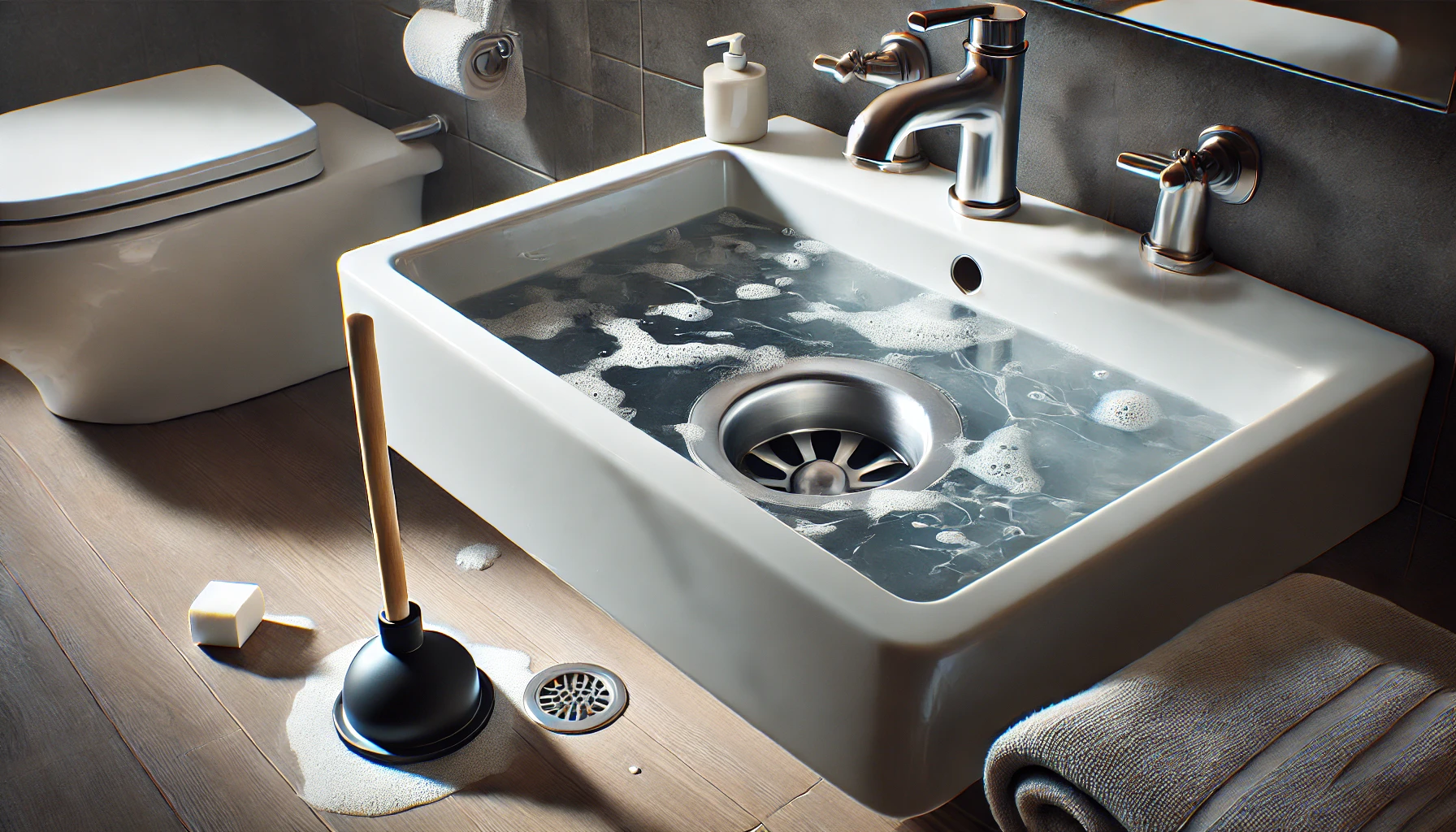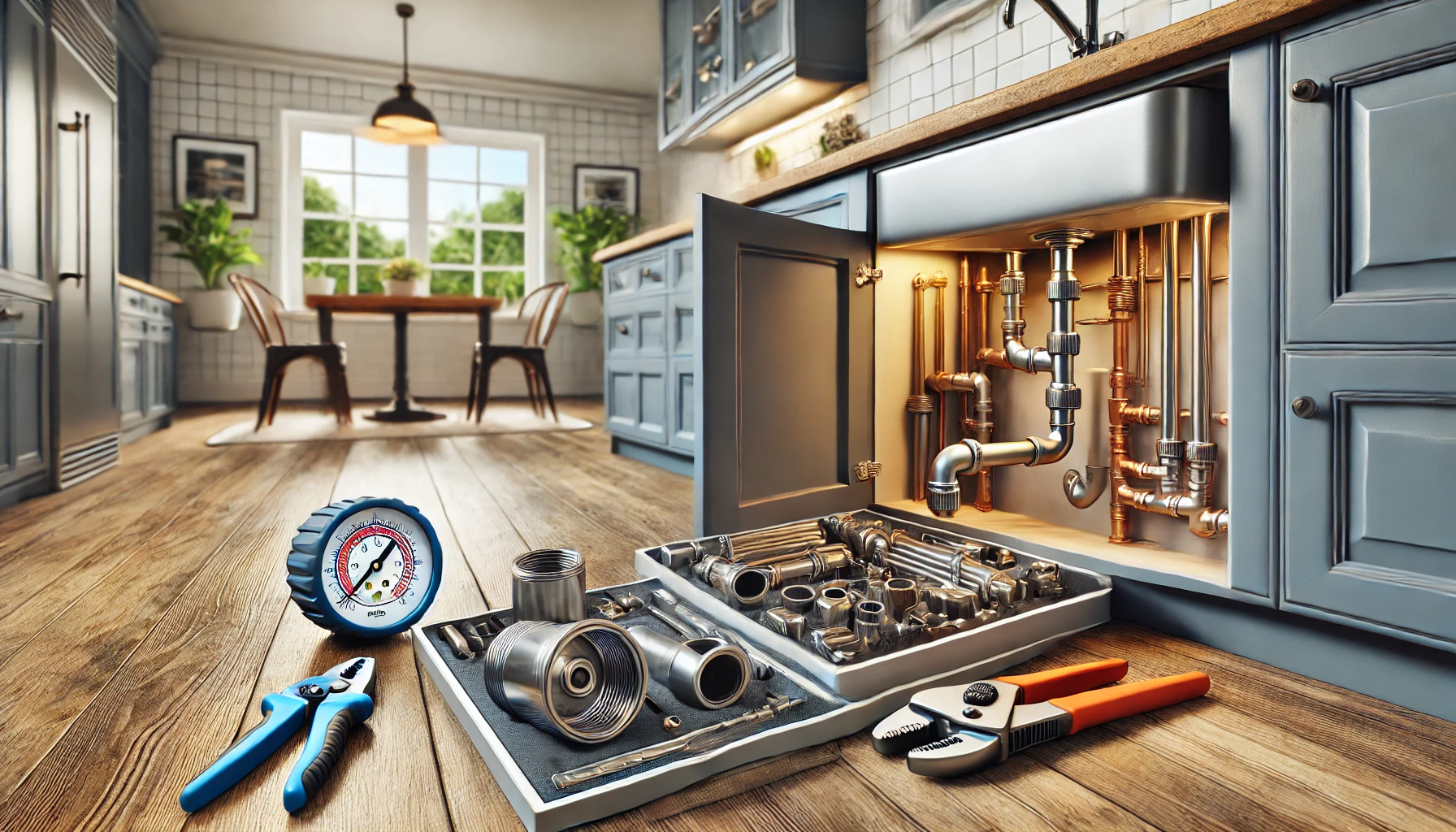
Toilet Overflowing? Here's What You Need to Do to Avoid a Bathroom Disaster
We've all been there: you flush the toilet, and suddenly, the water starts rising—fast. Before you know it, your bathroom floor is flooding, and panic sets in. You’ve got a mess on your hands, and your first instinct might be to scream for help. But don’t worry. With the right steps, you can contain the situation and minimize the damage before it gets worse. Here’s how to handle a toilet overflow like a pro.
Shut Off the Water: The First Step
The first thing you need to do when your toilet starts overflowing is to shut off the water supply—and fast. Here’s how:
Modern Toilets
If you have a newer model, there should be a shutoff valve located right behind your toilet, at the base of the tank. This valve is connected to the water supply line and controls the flow of water into the tank. Simply turn the valve clockwise until you can’t turn it anymore. This will stop the water from continuing to flow.
Older Toilets or Quick Fix
If the valve is not easily accessible, you can still stop the water by lifting the float lever inside the toilet tank. When you lift the tank’s lid, you’ll see the float at the top of the water. When you flush, the float falls, which opens the water valve. To prevent the valve from opening, hold the float lever up with something sturdy—like a piece of wood or a small tool. This will keep the valve closed and stop the flow of water.
Main Water Shutoff
If all else fails, you can cut off your home’s main water supply by turning off the main shutoff valve located near your water meter. This will stop all water flow in your home, not just to the toilet, but it can save you from major flooding.
Prevent the Flood from Spreading
Once the water is turned off, it’s crucial to contain the mess so it doesn’t spread to other parts of your home. Here’s what you need to do:
- Close the Bathroom Door: This will help keep the water contained inside the bathroom and prevent it from leaking into the hallway or other rooms.
- Grab Towels or Rags: Quickly grab a stack of towels or old rags and start soaking up the water. Start at the door, not near the toilet. If you begin soaking up the water around the toilet, you might push it toward the door, creating a bigger mess. Instead, start by placing towels around the doorframe to create a barrier.
- Move Items Out of the Way: If there are rugs or any valuables near the flooded area, move them to a dry location as quickly as possible to prevent water damage.
Unclog the Toilet Like a Pro
Now, it’s time to address the root of the problem: the clogged toilet. It’s not pleasant, but it’s necessary.
- Grab a Plunger: A plunger is your best tool for unclogging a toilet. It’s effective in most situations, from minor blockages to more stubborn ones.
- Seal the Plunger: Place the plunger into the toilet bowl, making sure it covers the drain completely. Push down firmly and begin to pump the plunger in an up-and-down motion. The goal is to create pressure that will break up the clog and get the water flowing again.
- Be Prepared for Spillage: As you plunge, the water may rise higher, so keep extra towels nearby to soak it up. This can be a messy process, but don’t get discouraged—it will work if done right.
Once the clog is cleared, you can turn the water supply back on and flush the toilet. Make sure it’s working properly and that the water doesn’t start rising again. If it does, you may need to repeat the plunging process or call in a professional plumber.
Proper Clean-Up to Avoid Future Damage
After you’ve dealt with the overflow, it’s important to properly clean the area. If the water isn’t cleaned up thoroughly, it can lead to mold and mildew growth, which can cause serious health issues down the line.
- Mop Up the Water: Start by mopping up the remaining water on the floor. Be sure to focus on any soaked areas, such as baseboards or nearby carpets.
- Dry the Area Completely: Use fans or dehumidifiers to dry out the space quickly. Mold thrives in wet environments, and the quicker you dry things out, the less likely it is to develop.
- Disinfect the Area: After mopping, disinfect the affected surfaces with a cleaner to ensure that bacteria and germs are eliminated.
If the cleanup process feels overwhelming or the water damage is extensive, it’s time to call in the experts. STOP Restoration, one of our trusted partners, can assist with water damage restoration. Their experienced team will arrive at your home promptly, assess the situation, and create a plan for restoring your bathroom and any other affected areas.
When to Call for Professional Help
If your efforts don’t seem to be solving the problem, or if the clog continues to recur, it might be time to call in a professional plumber. Sometimes, the cause of the overflow is a deep clog in the pipes that’s beyond the reach of a standard plunger.
A plumber can use specialized tools like a plumbing snake or high-pressure water jets to clear out more stubborn blockages. They can also inspect your system for other potential issues, like old pipes, tree root invasions, or improperly installed plumbing that might be contributing to recurring problems.
Why Professional Help Is Crucial in Texas
In Texas, where extreme temperatures can cause pipes to expand and contract, plumbing systems are especially susceptible to wear and tear. Frequent temperature fluctuations, especially in areas like Dallas or Houston, can lead to hidden clogs and damaged pipes. A plumber can help you identify these issues early before they cause major damage to your home.
Final Thoughts: Don't Let a Toilet Overflow Turn into a Bigger Problem
A toilet overflow can feel like a disaster, but if you act quickly and follow the right steps, you can prevent water damage and costly repairs.
Remember:
- Shut off the water immediately.
- Contain the mess to prevent it from spreading.
- Unclog the toilet carefully and call a professional if needed.
- Clean and dry the area thoroughly to prevent mold growth.
In Texas, the climate can make plumbing issues more frequent, so it’s always a good idea to get your plumbing system checked regularly to avoid surprises. If in doubt, don’t hesitate to reach out to a trusted plumber for help.
Taking the right steps now can save you a lot of headaches—and money—down the line.






